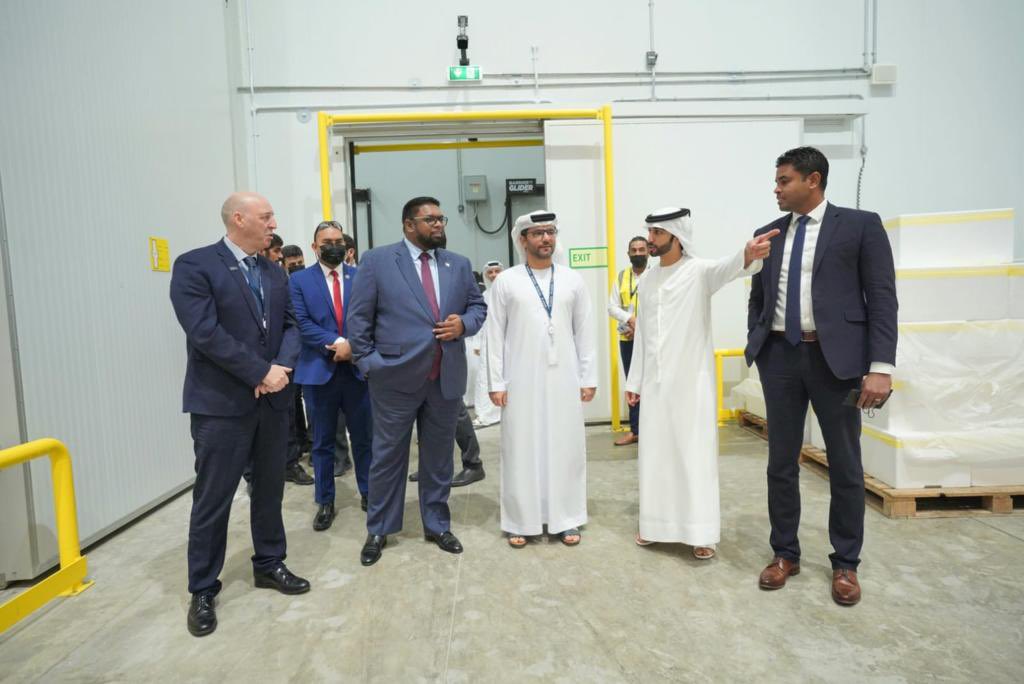SPRING, TEXAS (ExxonMobil, 11.Dec.2024) — ExxonMobil announced its Corporate Plan to 2030, creating a platform to further extend the company’s track record of delivering leading shareholder value. The plan reflects the company’s strategy to leverage its unique set of competitive advantages and unrivaled opportunities to create significant upside potential for shareholders. The company expects to deliver incremental growth potential of $20bn in earnings and $30bn in cash flow driven by investing in competitively advantaged opportunities, continued excellence in execution, and disciplined cost and capital management. (1)
“ExxonMobil has a unique set of highly valuable competitive advantages that equip us to do what few companies have ever done – create world-scale solutions to society’s biggest challenges, decade after decade,” said Darren Woods, ExxonMobil Chairman and CEO.
“Our steadfast commitment to strengthening these advantages, including an unwavering investment in technology, has led to a history of innovative solutions that meet society’s critical needs, reduce costs, and grow high-value products. That’s a formula for profitable growth and shareholder value through and beyond 2030 – no matter the pace and scale of the energy transition – that truly puts us in a league of our own,” Woods said.
Highlights:
Key elements of ExxonMobil’s 2030 plan:
- Increasing Pioneer acquisition average annual synergies by over 50% to more than $3bn (2)
- Growing new business earnings potential to $3bn (3)
- Adding $7bn more in structural cost savings vs. 3Q2024
- Increasing Upstream production to 5.4 million oil-equivalent barrels per day (MMboe/d) with >60% from advantaged assets
- Growing high-value product sales 80% vs. 2024 that contribute over 40% of 2030 earnings potential for Product Solutions
- Pursuing up to $30bn in lower emissions investment opportunities (4)
- Investing $27bn-$29bn of cash Capex in 2025 and $28bn-$33bn annually in 2026-2030 to progress attractive long-term opportunities, with base planned Capex roughly flat and reinvestment rate declining to 40% from 50% over the plan period (5)
Consistent execution of ExxonMobil’s strategy and business transformation over the past five years has substantially strengthened its earnings power. On a constant price and margin basis, the company is generating more than $15bn in earnings and more than $20bn in cash flow vs. 2019, and has delivered structural cost savings of more than $11bn year-to-date vs. 2019. (6) Cash flow has grown faster than that of any other integrated oil company (IOC) over the past three- and five-year periods. (7) That outperformance has translated to shareholder value – ExxonMobil’s total shareholder return leads IOCs year-to-date and over the last three- and five-year periods. (8)

Financial strength
Over the next six years, the company expects to generate an additional $20bn in earnings potential and $30bn in cash flow potential. (1) It plans to grow earnings at a CAGR of 10% and cash flow at 8% and has plans to achieve an additional $7bn in structural cost savings by simplifying business processes, optimizing supply chains, further enhancing maintenance turnaround processes, and modernizing information technology and data management systems.
The company’s capital allocation approach prioritizes competitively advantaged, high-return, low-cost-of-supply investments. In 2025, the company expects cash capital expenditures to be in the range of $27bn to $29bn, reflecting the first full year of Pioneer in the portfolio and investment to build new businesses with base capex remaining flat. From 2026 to 2030, base Capex is consistent, while Capex growth is driven by progressing advantaged, long-term opportunities in new businesses, and a few early-stage large projects in the company’s traditional businesses. The reinvestment rate relative to expected cash flow declines 10 percentage points over the plan period.5
“Through 2030, we plan to deploy about $140bn to major projects and the Permian Basin development program,” added Woods. “We expect this capital to generate returns of more than 30% over the life of the investments. (9) Strong investment returns have driven 42 consecutive years of annual dividend growth, a claim only 4% of the S&P 500 can make. This is why, when we list our capital allocation priorities, investing in accretive growth always comes first.”
Cash flow and earnings growth generate a further $165bn in surplus cash over the plan period driving increased shareholder distributions. (10) ExxonMobil has increased its annual dividend per share for 42 consecutive years, and recently increased its quarterly dividend by 4 cents per share effective this quarter. The company continues to expect to repurchase shares at a $20bn annual pace in 2025, and today announced plans for a further $20bn of share repurchases in 2026, assuming reasonable market conditions.
Upstream
ExxonMobil continues to strengthen its Upstream portfolio of advantaged assets that offer lower cost of supply and higher returns. By 2030, at a 2024 dollar real Brent price of $65 per barrel, a real Henry Hub price of $3 per mmbtu, and a real TTF price of $6.50 per mmbtu, the company plans to deliver an additional $9bn in Upstream annual earnings potential – more than 50% higher than in 2024.
With the Pioneer acquisition, the company reached its target of having more than 50% of its total Upstream production from advantaged assets (Permian, Guyana, and LNG) three years earlier than planned. By 2030, more than 60% of the company’s production is expected to come from these advantaged assets, which are expected to grow by an additional 1.2 Mboe/d during that period. Total Upstream production is expected to reach 5.4 Mboe/d by 2030, even as the company plans to lower its operated Upstream emissions intensity 40-50% versus 2016.11
Following its acquisition and integration of Pioneer, ExxonMobil expects to achieve more than $3bn in annual synergies, a more than 50% increase from prior guidance. The company now has the largest contiguous acreage position in the Permian Basin with double the number of low-cost net drilling locations versus the next closest competitor. (12) The company is applying its technology advantage to increase capital efficiency and resource recovery and expects to roughly double production in the Permian Basin to approximately 2.3 Mboe/d by 2030.
ExxonMobil also announced plans for two additional developments in Guyana, Hammerhead and Longtail, bringing the total number of developments to eight by 2030. Total production capacity in Guyana, on an investment basis, is expected to reach 1.7 MMb/d with gross production growing to 1.3 MMb/d by 2030.
ExxonMobil has four world-class LNG projects under development and expects to surpass 40 million metric tons per annum of LNG sales by 2030. The addition of these projects further expands the company’s global LNG footprint and market access. The company expects to achieve first LNG sales from the Golden Pass development in the US and from the Qatar North Field East expansion project near the end of 2025. It also is targeting final investment decisions at Papua New Guinea’s Papua project in 2025 and at Mozambique’s Rovuma development in 2026.
Product Solutions
ExxonMobil’s Product Solutions business is expected to grow annual earnings potential by an additional $8bn by 2030, at average 2010-2019 margins – a 10% CAGR. About half of the earnings growth is expected to come from advantaged projects and high-value products to meet society’s needs today and well into the future.
The company is on track to start up six advantaged projects in 2025, as many as in the prior five years combined. These projects drive significant volume and mix improvements and include the China chemical complex; a hydrofiner in Fawley, UK; the Singapore resid upgrade project; a renewable diesel project in Strathcona, Canada; additional advanced plastics recycling units in Baytown, Texas; and an expansion of the ProxximaTM thermoset resin manufacturing facilities in East Texas.
ProxximaTM has unique properties that will drive substitution in existing markets and expand into new applications like structural composites and steel substitutes – areas where traditional resins struggle to compete. The company is investing in facilities to produce more ProxximaTM feedstock with plans to ramp up capacity to nearly 200,000 metric tons per year by 2030.
ExxonMobil also is growing its carbon materials venture to capture attractive opportunities in battery anode markets. ExxonMobil developed an advanced coke product that delivers a higher performance, differentiated graphite. The result is a battery with up to 30% higher capacity, 30% faster charging time, and extended battery life. The company is working with automobile manufacturers to test this new product, with plans to have its first commercial-scale plant online in 2028 to meet the growing demand for electric vehicle batteries and their components.
Low Carbon Solutions
ExxonMobil is pursuing up to $30bn of low emission opportunities between 2025 and 2030, with almost 65% spent on reducing emissions for third-party customers. Execution of these opportunities is contingent on the right policy and regulation as well as continued technology and market development. ExxonMobil is pacing investments in new ventures to balance opportunities and risks as markets develop.
ExxonMobil’s Low Carbon Solutions business focuses on three primary verticals: carbon capture and storage, hydrogen, and lithium. These opportunities align with ExxonMobil’s core competencies.
The company is developing the world’s first large-scale carbon capture and storage system, which includes a high-capacity CO2 pipeline network connecting emitters from many industries to permanent subsurface storage capacity throughout the US Gulf Coast.
ExxonMobil expects its low-carbon hydrogen facility in Baytown to be the world’s largest, producing up to 1 billion cubic feet of virtually carbon-free hydrogen per day with about 98% of the CO2 captured and stored. Some of this hydrogen will be used to produce over a million metric tons per year of low-carbon ammonia. The company is working toward a final investment decision in 2025 with the potential to start operations in 2029.
The company is building foundational projects that work with the right policy, today’s technology, and today’s infrastructure. At the same time, ExxonMobil is developing new technologies to reduce the cost of emission reductions, which is the only way to achieve deployment at scale. With supportive policy and growing market interest, the company expects its Low Carbon Solutions business to grow earnings contributions by $2bn in 2030 versus 2024.
___________________
NOTES
(1) Increases are versus 2024. Earnings and cash flow from operations exclude identified items and are adjusted to 2024 $65/bbl real Brent (assumes annual inflation of 2.5%) and 10-year average Energy, Chemical, and Specialty Product margins, which refer to the average of annual margins from 2010-2019. Cash flow from operations also excludes working capital/other.
(2) $3bn in Pioneer synergies is a >50% increase vs. prior disclosures and is based on a 10-year average.
(3) $3bn by 2030 subject to additional investment by ExxonMobil, final 45V regulations for hydrogen production credits, and receipt of government permitting for carbon capture and storage projects.
(4) Lower emissions cash capex includes cash capex attributable to carbon capture and storage, hydrogen, lithium, biofuels, ProxximaTM, Carbon Materials, and activities to lower ExxonMobil’s emissions and/or third party (3P) emissions. Planned spend is from 2025-2030.
(5) Cash flow from operations excludes identified items and working capital/other is adjusted to 2024 $65/bbl real Brent (assumes annual inflation of 2.5%) and 10-year average Energy, Chemical, and Specialty Product margins, which refer to the average of annual margins from 2010-2019.
(6) Earnings and cash flow from operations exclude identified items and are adjusted to 2024 $65/bbl real Brent (assumes annual inflation of 2.5%) and 10-year average Energy, Chemical, and Specialty Product margins, which refer to the average of annual margins from 2010-2019. Cash flow from operations also excludes working capital/other.
(7) Third-party cash flow refers to cash flow excluding working capital/other and is calculated as earnings sourced from FactSet plus depreciation sourced from FactSet. 2019 to 2023 figures are actuals. 2024 figures are consensus estimates as of 5 Dec. 2024. Three- and five-year CAGRs are from 2021 to 2024E and 2019 to 2024E respectively.
(8) Calculated as of 29 Nov. 2024.
(9) Major investments represents investments over $500mn that are expected to start up between 2025 and 2030. Includes pre-2025 Capex spend on these investments, except for the Permian work program, which is limited to Capex between 2025-2030. Calculations for full-life major investments returns are based on ExxonMobil internal project plans for investments over $500mn that are expected to start up between 2025 and 2030 and the Permian work program. Calculations include internal project plan price assumptions.
(10) Surplus cash is calculated assuming 2024 $65 real Brent (assumes annual inflation of 2.5%) and 10-year average Energy, Chemical, and Specialty Product margins, which refer to the average of annual margins from 2010-2019. Any decisions on future dividend levels are at the discretion of the Board of Directors. This calculation assumes dividends are held flat relative to 4Q24 levels. The PP&E / I&A factor includes changes in non-controlling interests. 3Q24 cash balance excludes a $5bn minimum cash assumption.
(11) Plans based on Scope 1 and Scope 2 emissions from operated assets. Intensity is calculated as emissions per metric ton of throughput/production. ExxonMobil reported emissions, reductions, and avoidance performance data are based on a combination of measured and estimated emissions data using reasonable efforts and collection methods. Calculations are based on industry standards and best practices, including guidance from the American Petroleum Institute (API) and Ipieca. There is uncertainty associated with the emissions, reductions, and avoidance performance data due to variation in the processes and operations, the availability of sufficient data, quality of those data, and methodology used for measurement and estimation. Performance data may include rounding. Changes to the performance data may be reported as part of the Company’s annual publications as new or updated data and/or emission methodologies become available. We are working to continuously improve our performance and methods to detect, measure and address greenhouse gas emissions. ExxonMobil works with industry, including API and Ipieca, to improve emission factors and methodologies, including measurements and estimates. ExxonMobil’s plans regarding expected GHG emissions reductions by 2030 can be found in our 2024 Advancing Climate Solutions report.
(12) Based on Enverus 2024 Permian Basin Play Fundamentals article with updated data as of 10/2024 | Locations normalized to 10,000-foot laterals; Peers include Apache Corporation, BP, ConocoPhillips, Coterra Energy, Chevron, Devon Energy, Diamondback Energy, EOG Resources, Matador Resources, Ovintiv, Occidental, and Permian Resources. PV-10 Breakeven @ 20:1 WTI:HH ($/bbl).



